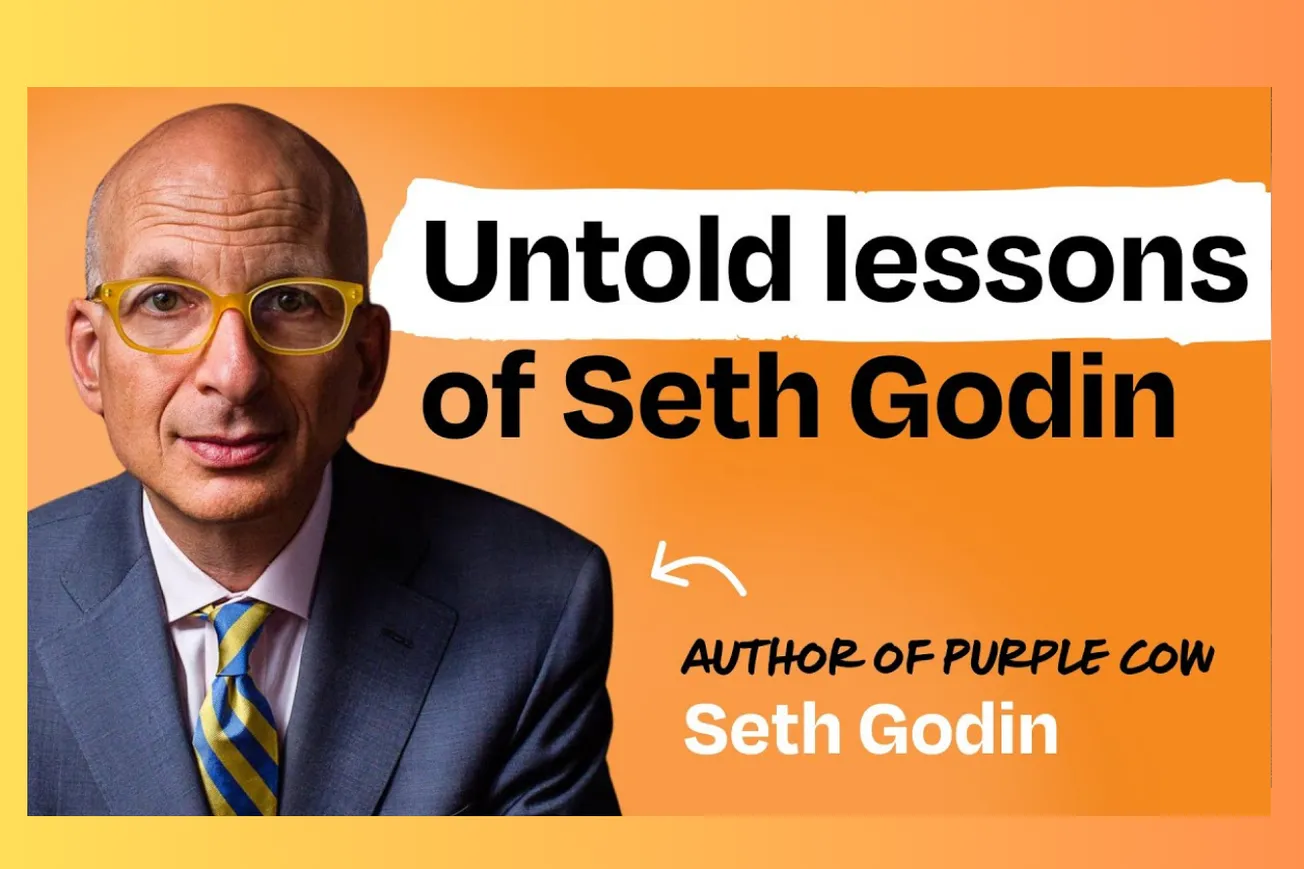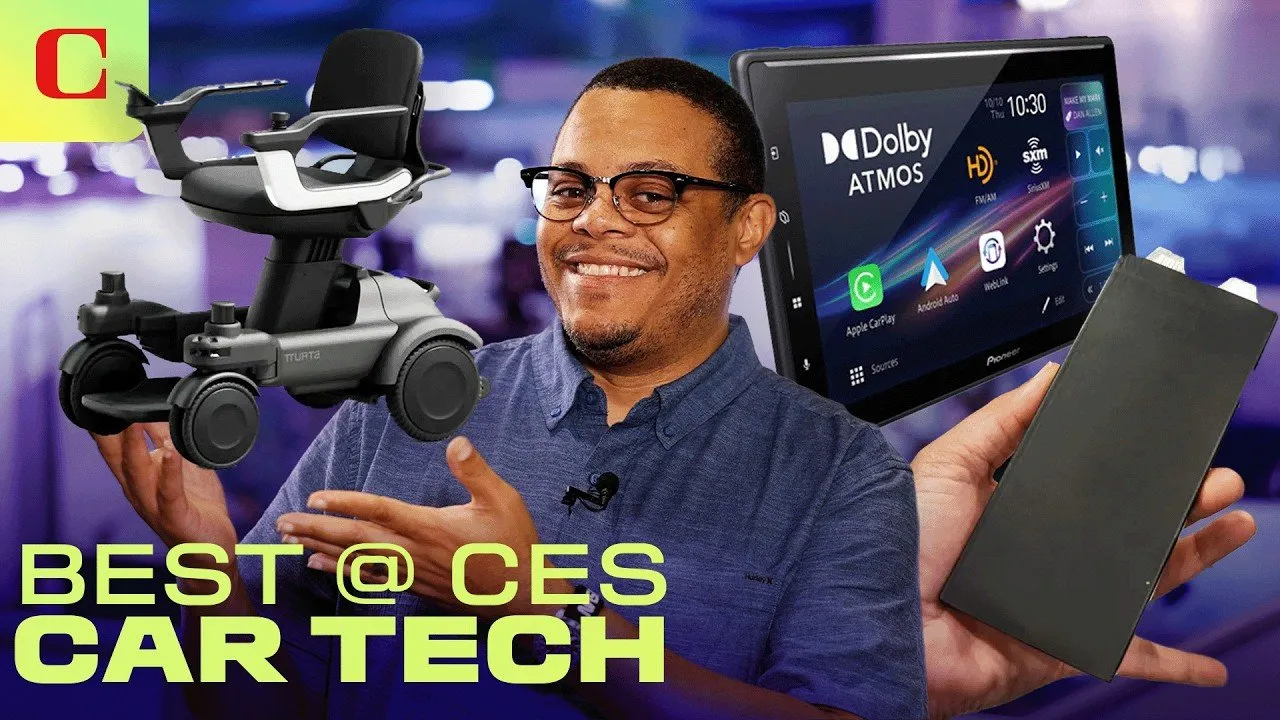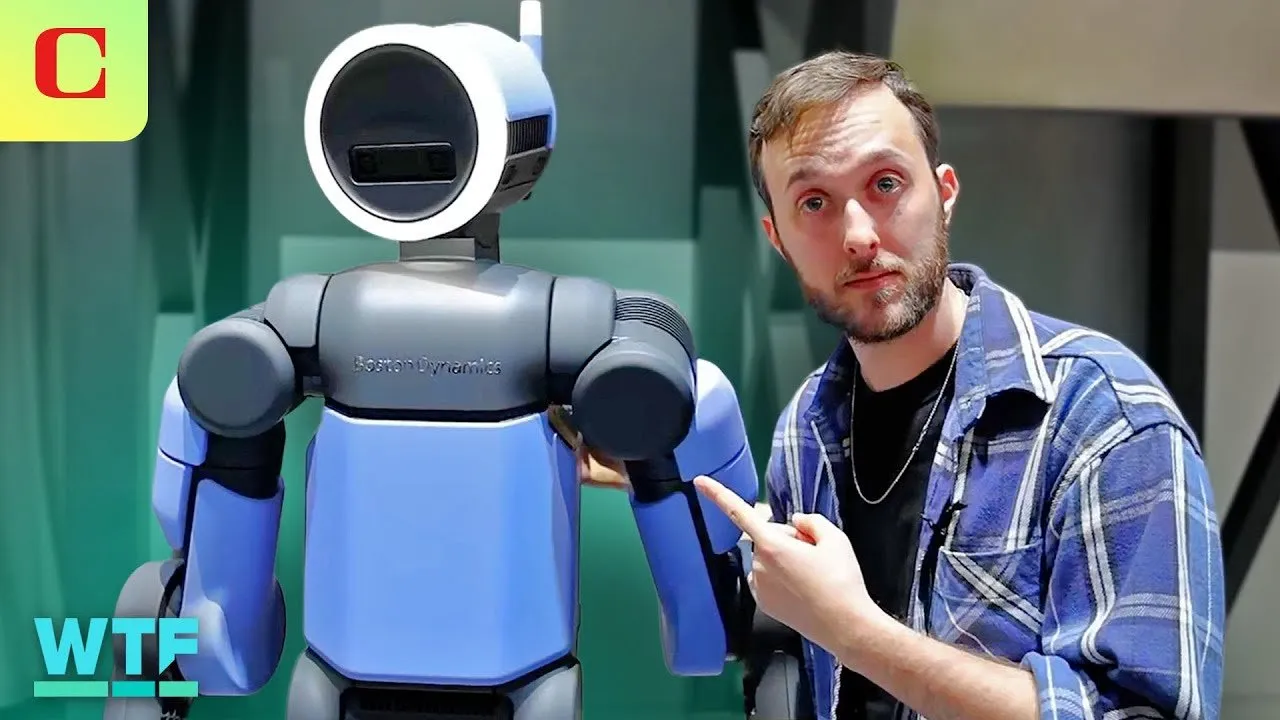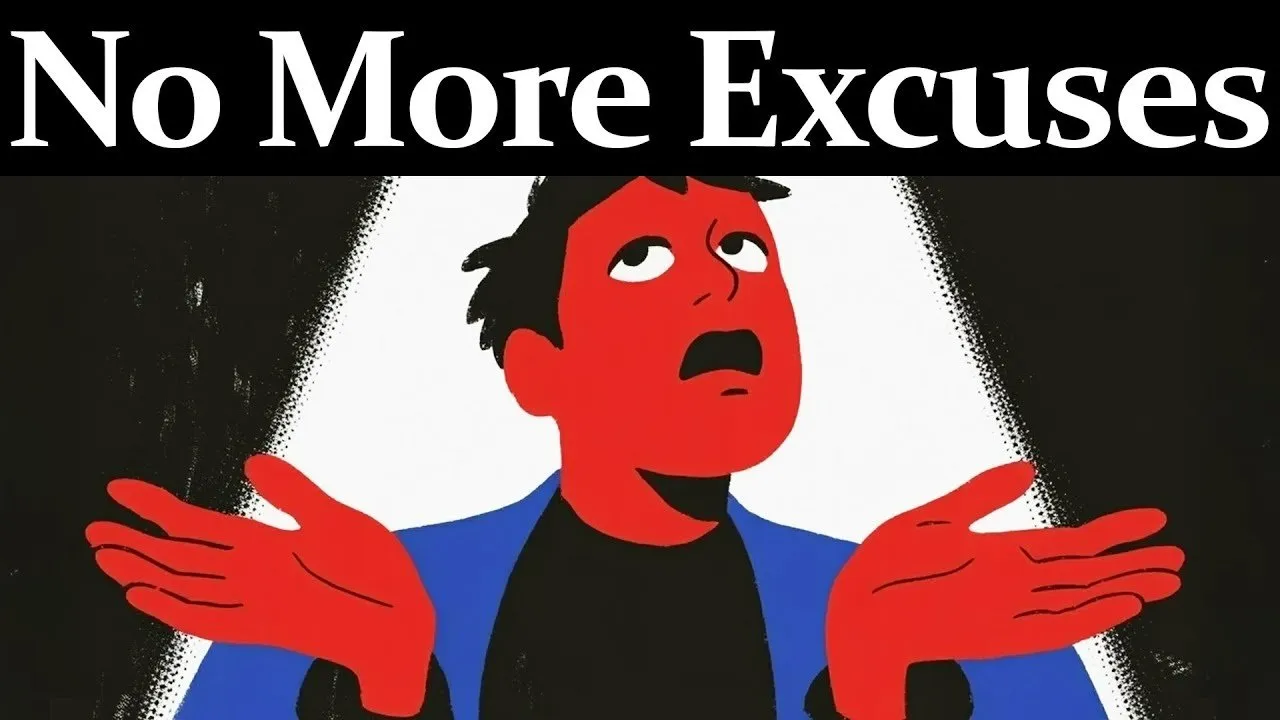Table of Contents
Learn how the marketing legend builds products that spread, creates lasting brands, and develops strategic thinking from his 10,000+ days of insights.
Key Takeaways
- Good taste means knowing what other people want just before they do, not personal preference
- Marketing is the product itself - you can't separate product development from customer experience
- AI companies must focus on promises they make to users, not the technology itself
- Four strategic choices determine your future: customers, competition, validation source, and distribution
- Remarkable products are worth making a remark about - they spread through authentic word-of-mouth
- Great strategy requires tension at its center, creating possibility that might not work
- Systems thinking reveals invisible rules that constrain or enable breakthrough innovations
- Quality means meeting spec consistently, while high standards mean continuously improving the spec
- Network effects must be built into products from the beginning, not hoped for later
Timeline Overview
- 00:00–05:17 — Seth's Background and Introduction: Legendary marketer's journey from 30th employee at Spinnaker Software to publishing 21 books and maintaining a 10,000-day blogging streak
- 05:17–08:09 — Understanding Good Taste and High Standards: How to know what others want before they do, the difference between quality and perfection, and why meeting spec matters more than endless refinement
- 08:09–09:48 — Becoming the Best at Whatever You Do: Martin Luther King Jr.'s wisdom about finding artistic freedom within job boundaries and choosing to add delight to people's days
- 09:48–14:09 — Seth's Product Manager Journey: Early career at Spinnaker Software developing computer adventure games, learning that marketing is the product, and managing 40 engineers without formal authority
- 14:09–16:00 — Common Product Building Mistakes: Seven critical errors including lack of empathy, poor time management, and failure to build network effects into software from the beginning
- 16:00–19:04 — Building Brands in the AI Age: Why AI will become invisible like electricity, the importance of making difficult promises and keeping them, and how brands differ from logos
- 19:04–22:40 — Using AI to Enhance Writing: Seth's process with Claude for gap analysis, claim validation, and patient editing while maintaining authentic voice and personal accountability
- 22:40–27:38 — Four Critical Strategic Elements: How choosing customers, competition, validation sources, and distribution channels determines product future more than features themselves
- 27:38–29:15 — The Role of Tension in Strategy: Distinguishing productive tension from harmful stress, creating possibility and anticipation that drives customer engagement and authentic innovation
- 29:15–33:11 — The Purple Cow Concept: Why remarkable products spread naturally, how Google's two-button homepage created word-of-mouth marketing, and the importance of customer traction over viral gimmicks
- 33:11–34:56 — "Safe is Risky" Philosophy: Understanding how systems protect themselves through culture, recognizing when fear serves the status quo, and choosing strategic risks over false safety
- 34:56–37:07 — The Power of Systems Thinking: Recognizing invisible rules and patterns, challenging hiring biases, and finding leverage points where individuals can change established rules
- 37:07–38:10 — Better Waves Make Better Surfers: Choosing the right opportunities and waiting for excellence rather than rushing to meet imaginary deadlines with mediocre solutions
- 38:10–43:07 — Rebranding vs. Re-logoing: Jaguar's missed opportunity analysis, Tesla's door handle strategy versus Cybertruck's divisiveness, and the difference between buzz and customer traction
- 43:07–44:14 — Empathetic Leadership and Conclusion: Painting pictures of where others want to go rather than self-serving visions, focusing on service over entitlement
The Foundation: Good Taste and Strategic Thinking
Seth's definition of good taste as "knowing what other people want just before they do" reveals a profound shift from ego-driven to empathy-driven product development. This isn't intuition or guesswork - it's disciplined observation of human behavior patterns and unmet needs. When jazz musicians or fabric designers are praised for "good taste," they're bringing something unexpected that audiences didn't know they wanted but immediately recognize as valuable.
The distinction between quality and standards becomes crucial for product teams under pressure. Quality is binary - you either meet the specification or you don't. High standards mean continuously questioning whether your specifications serve your users well enough. Seth's insight that "if you meet spec you're done" combats the perfectionism that kills momentum and delays valuable feedback from real users.
His experience at Spinnaker Software illustrates why this matters. Rather than endlessly polishing features, he focused relentlessly on whether the person buying their educational games would be delighted. This external focus - "not perfect for us, but perfect for them" - becomes the north star that guides every product decision from features to pricing to support policies.
Strategic thinking emerges from recognizing that every human interaction requires invented systems for interoperability. These systems start useful but often evolve to serve themselves rather than their original purpose. The hiring system that favors people "like us" perpetuates itself through confirmation bias, harming both diversity and talent acquisition. Seeing these invisible systems allows you to find leverage points where small changes create disproportionate improvements.
The Four Strategic Choices That Determine Your Future
Seth's framework reveals how seemingly operational decisions actually define your entire business trajectory. Each choice creates cascading constraints that shape everything from feature priorities to team culture to financial models.
Customer Choice as Product Architecture: When the Humane Pin team chose customers expecting "finished Apple quality," they doomed themselves before shipping. Apple's customers have been trained through decades of polished launches to expect perfection on day one. Contrast this with choosing Raspberry Pi enthusiasts who expect to tinker, troubleshoot, and collaborate on improvements. The same core technology becomes either a failure or a success based purely on audience selection.
This customer choice determines technical architecture decisions. Building for impatient enterprise buyers requires different error handling, documentation depth, and support systems than building for patient hobbyists. Your customer's emotional state when things go wrong - their tolerance for ambiguity, their technical sophistication, their budget constraints - becomes your product specification.
Competition as Constraint System: Choosing your competitive landscape isn't just about positioning - it's about accepting the rules of engagement that define your space. Competing against Walmart means accepting that price will always be the primary conversation. You cannot build a premium brand while competing on Walmart's terms because the system won't support it.
Seth's insight about Microsoft Word beating WordPerfect illustrates how understanding competitive dynamics shapes product strategy. Word didn't win on features - it won on network effects. When your colleagues needed to collaborate in Word format, switching became impossible regardless of individual preference. The competitive choice determined the product strategy: focus on format compatibility and workplace adoption rather than individual user experience.
Validation Source as Decision Architecture: Perhaps the most overlooked choice, validation source determines whose opinion matters when conflicts arise. Most product teams implicitly choose to please their immediate boss, creating endless friction when customer needs diverge from internal preferences.
Seth's suggestion to have "one difficult conversation" with your boss about whose taste you're matching eliminates hundreds of future conflicts. When customer research contradicts executive intuition, when user feedback suggests different priorities, when market data challenges internal assumptions - having clear validation hierarchy prevents paralysis and political maneuvering.
Distribution as Product DNA: Distribution isn't marketing - it's product architecture. Video games sold in Target require completely different packaging, pricing models, discovery mechanisms, and user onboarding than games distributed through Steam. The shelf space, buying context, customer expectations, and competitive environment fundamentally alter what constitutes a successful product.
When Seth mentions they were "competing against Walmart" in physical retail while competitors used "ziplock bags in computer stores," he's describing how distribution choice forced specific product decisions. Target customers make quick decisions based on packaging and price points. Computer store customers spend time evaluating technical specifications and features. Same core product, completely different optimization targets based on distribution choice.
The profound insight here is that most teams make these choices unconsciously or avoid them entirely. By making them explicit and deliberate, you gain agency over the forces that will shape your product's evolution.
Building Remarkable Products That Spread
The Purple Cow concept operates on a deeper psychological principle than most people realize. Seth's definition - "worth making a remark about" - reveals that remarkable products succeed by making their users look good to others. This isn't about the product itself being impressive; it's about the user gaining social status by sharing it.
The Google Case Study Dissected: Google's two-button homepage succeeded because it made early adopters feel smart and helpful. When tech-forward people recommended Google to confused friends, they weren't just solving a search problem - they were demonstrating their ability to find superior solutions. The homepage's radical simplicity became a signal of technological sophistication.
This creates a virtuous cycle: users recommend products that enhance their reputation, which attracts similar users who also want to appear knowledgeable. Google's brand promise - "we're smart enough to take you where you want to go" - aligned perfectly with their users' desire to appear digitally savvy.
Network Effects vs. Viral Marketing: Seth's emphasis on building network effects into products from the beginning reveals a fundamental misunderstanding in modern product development. Most teams hope for virality after launch, but true network effects make the product more valuable for existing users when new users join.
Microsoft Word's dominance illustrates this perfectly. The product became more valuable for individual users as more colleagues adopted the same format. This wasn't accidental - it was built into the product architecture. Each new user strengthened the value proposition for existing users, creating natural evangelism.
The Customer Traction Test: Steve Blank's customer traction framework - do people stick around and do they tell their friends - becomes the ultimate validation for remarkable products. But Seth adds a crucial insight: you need to know in advance what you want people to say about you.
This requires designing for specific conversations. When early Tesla Model S owners encountered the pop-out door handles, they created predictable moments for demonstration. The slightly impractical but noticeable feature generated consistent talking points that led to driving experiences. The remarkable element (door handles) created conversation opportunities that showcased the truly valuable element (acceleration).
The Empathy-Driven Approach: Remarkable doesn't mean attention-grabbing for its own sake. Jaguar's rebranding controversy generated enormous discussion but didn't solve customer problems or make advocates look good for recommending the brand. Buzz without utility is just noise.
The distinction between remarkable and gimmicky comes down to whether sharing the product genuinely helps others. Google solved real search problems while making users appear sophisticated. Tesla created genuine excitement about electric vehicle performance while giving early adopters bragging rights. Both products made their users heroes in their social circles.
AI, Brands, and Modern Marketing Realities
Seth's prediction that "AI will become invisible like electricity" represents a fundamental shift in how technology companies should position themselves. When electricity became ubiquitous, General Electric didn't succeed by promoting their use of electricity - they succeeded by delivering on specific promises about lighting, appliances, and industrial equipment.
The Promise-Driven Brand Framework: The Nike-versus-Hyatt example reveals how true brands transcend product categories through consistent promise delivery. Nike's brand promise around athletic excellence and self-improvement is so clear that you can imagine their hotel experience: motivational, performance-focused, designed for active travelers. Hyatt's promise stops at "comfortable accommodation" - too generic to extend meaningfully.
This becomes crucial for AI companies drowning in technical feature conversations. Claude's brand success compared to ChatGPT illustrates the difference between promise-focused and capability-focused positioning. Claude built trust through consistent delivery of helpful, humble responses, while ChatGPT's tendency to overstate capabilities and argue with users damaged the fundamental brand promise.
The Loyalty Test: Seth's airline example exposes the difference between transactional relationships and genuine brand loyalty. Points programs are bribery systems that acknowledge the lack of intrinsic value. True brand loyalty shows up when customers pay premiums for consistent experience delivery, even when cheaper alternatives exist.
This test becomes essential for AI companies building subscription models. Are users staying because switching costs are high, or because the brand promise is uniquely valuable? The durability of your business model depends entirely on which foundation you're building on.
Writing Partnership with AI: Seth's collaboration process with Claude reveals a mature approach to AI integration that preserves human authenticity while leveraging machine capabilities. Using Claude for gap analysis ("what did I miss in this list?") and claim validation ("what assertions am I making that aren't well supported?") enhances human thinking without replacing it.
The key insight is maintaining clear ownership and voice. Seth wrote every word with his name on it, but used Claude as a "patient editor" to identify blind spots and logical gaps. This partnership model suggests how professionals can integrate AI tools without losing their unique perspective and accountability.
His observation that Claude feels kind and humble while ChatGPT feels lazy and argumentative demonstrates how AI companies can differentiate through interaction design and error handling, not just capability metrics.
The Power of Tension in Strategy
Seth's distinction between productive tension and harmful stress reveals a sophisticated understanding of human psychology in product adoption. Stress creates paralysis because it presents irreconcilable contradictions - wanting to leave a job you need to keep creates no forward motion. Tension creates energy and anticipation that drives decision-making.
Tension as Emotional Investment: When customers imagine their lives transformed by your product promise, they become emotionally invested in your success. The tension emerges from uncertainty: "If this actually works, my life improves significantly. But what if it doesn't?" This emotional state makes people pay attention, research thoroughly, and care about outcomes.
Seth's childhood memory of PF Flyers illustrates how tension converts into either loyalty or betrayal. The promise that sneakers would make him "fast enough to run away from the bully" created genuine tension because the stakes felt real. When the product failed to deliver, the broken promise became a permanent negative association. But when products successfully resolve tension, customers become lifelong advocates.
The Art of Promise-Making: Effective tension requires promises that are ambitious enough to matter but achievable enough to deliver. This becomes the central strategic challenge: how bold can you be without setting yourself up for failure?
Tesla's early Model S strategy demonstrates masterful tension creation. The promise wasn't just "electric car" - it was "performance that will shock you while proving environmental responsibility." The door handles created conversation opportunities, but the ludicrous mode acceleration delivered on the core promise. Customers could evangelize both the environmental benefits and the performance superiority.
Tension vs. Confusion: Many products fail because they create confusion rather than tension. Confusion happens when promises are unclear, contradictory, or irrelevant to customer desires. Tension requires crystal-clear understanding of what customers actually want, then offering a path to get there that might not work.
The Cybertruck example shows how tension can become counterproductive when it's based on divisiveness rather than possibility. Pickup truck buyers want utility signaling and neighbor approval. Creating tension around whether the truck is "too weird" fights against fundamental customer desires rather than amplifying them.
Building Sustainable Tension: The most effective product tensions tap into existing customer frustrations or unfulfilled desires. Google's tension wasn't "will this search engine work?" - it was "will I finally be able to find what I'm looking for quickly?" The tension connected to pre-existing pain points while offering a dramatically better solution path.
This approach requires deep customer empathy and market timing. You need to understand what people already want but can't easily get, then create believable pathways to fulfillment that feel risky enough to generate excitement.
Conclusion
Seth Godin's approach to building remarkable products reveals a profound shift from feature-driven to systems-driven thinking. His decades of experience show that sustainable success emerges not from technical superiority or marketing cleverness, but from understanding human psychology, market dynamics, and the invisible systems that shape behavior.
The interconnection between his concepts becomes clear: good taste enables you to make promises people actually want; strategic choices determine whether you can deliver on those promises; remarkable products make users look good for sharing them; productive tension creates emotional investment; and systems thinking helps you find leverage points where small changes create extraordinary results.
What makes Seth's approach particularly powerful is its emphasis on empathy over ego. Every framework he presents - from the four strategic choices to the Purple Cow concept - ultimately serves others rather than the creator. This shift from "what do I want to build?" to "what do they need me to build?" fundamentally changes how you approach product development, marketing, and business strategy.
The meta-lesson underlying all of Seth's tactics is that remarkable products emerge from remarkable thinking about human needs, market systems, and strategic constraints. Technical execution matters, but strategic empathy determines whether that execution creates lasting value for both users and creators.
Practical Implications
- Implement the Four Choices Framework: Before your next product decision, explicitly document your choices for customers (specific demographic and psychographic profiles), competition (direct alternatives and substitutes), validation source (whose opinion determines success), and distribution (how users discover and access your product)
- Design for Social Status Enhancement: Audit your product for moments when users can look good by recommending it to others - if sharing your product doesn't enhance the sharer's reputation, redesign the experience or positioning
- Create Productive Tension Through Ambitious Promises: Identify one bold but achievable promise you can make to your target audience, then build your entire product experience around reliably delivering on that specific commitment
- Map Invisible Systems: Document the unspoken rules, cultural norms, and established patterns in your industry - look for system stress points where small changes could create cascading improvements
- Apply the Specification vs. Standards Distinction: Define "good enough" clearly for each feature based on user needs, ship when you meet those specifications, then continuously raise the standards based on user feedback and market evolution
- Test Network Effects Integration: Redesign your core product experience so it becomes more valuable for existing users when new users join - this should be built into functionality, not added through referral programs
- Conduct Brand Promise Audits: Evaluate whether your brand could successfully extend into adjacent product categories - if customers can't imagine what your hotel/sneaker/software would be like, your brand lacks clarity and strength
- Practice Patient AI Collaboration: Use AI tools for gap analysis, claim validation, and systematic feedback rather than content generation - maintain human ownership and voice while leveraging machine pattern recognition
- Optimize for Conversation Design: Identify the specific words you want customers to use when describing your product to others, then engineer experiences that naturally generate those exact conversations





